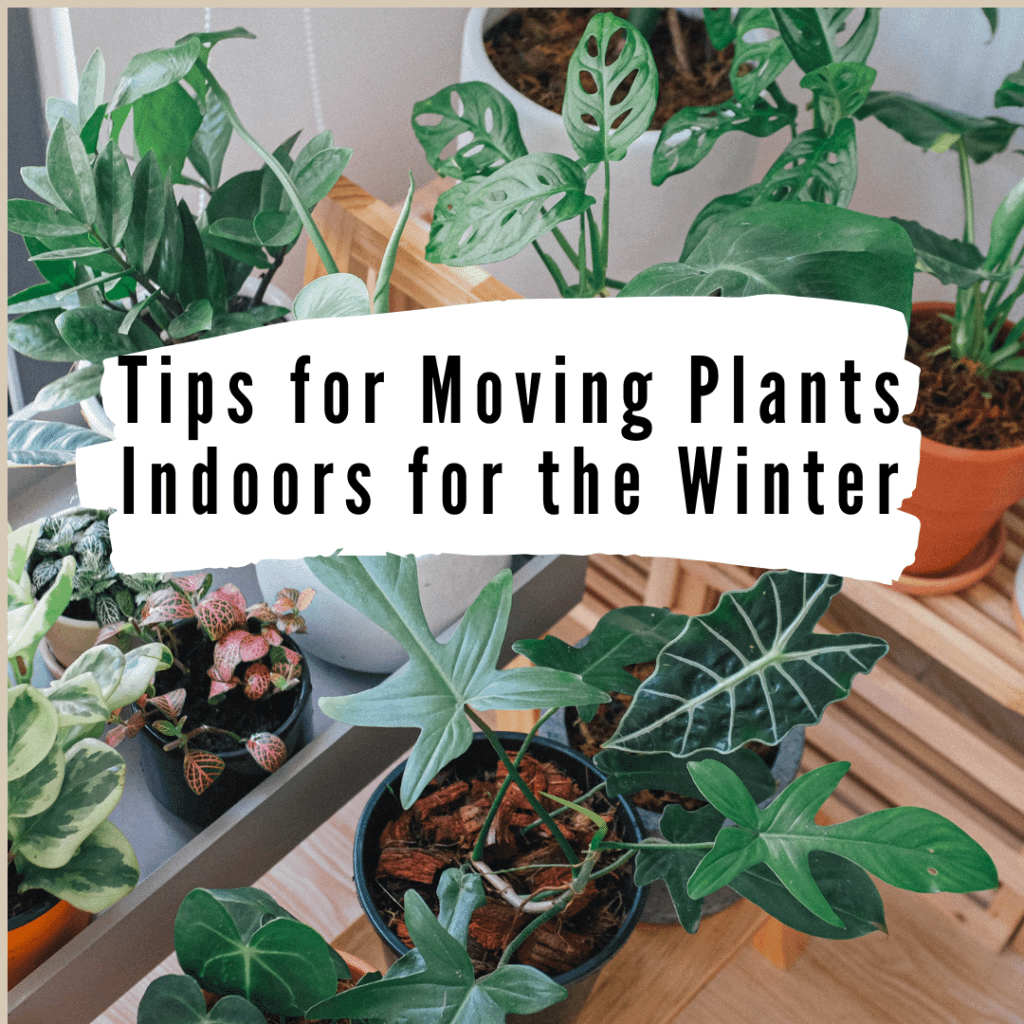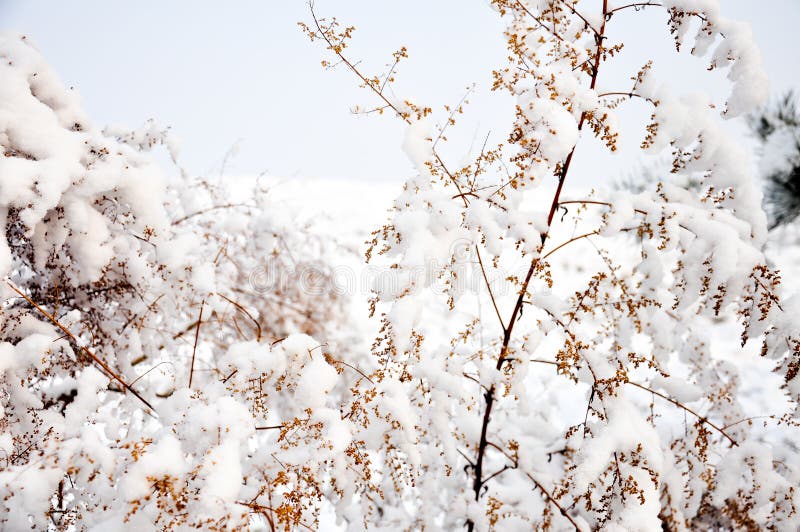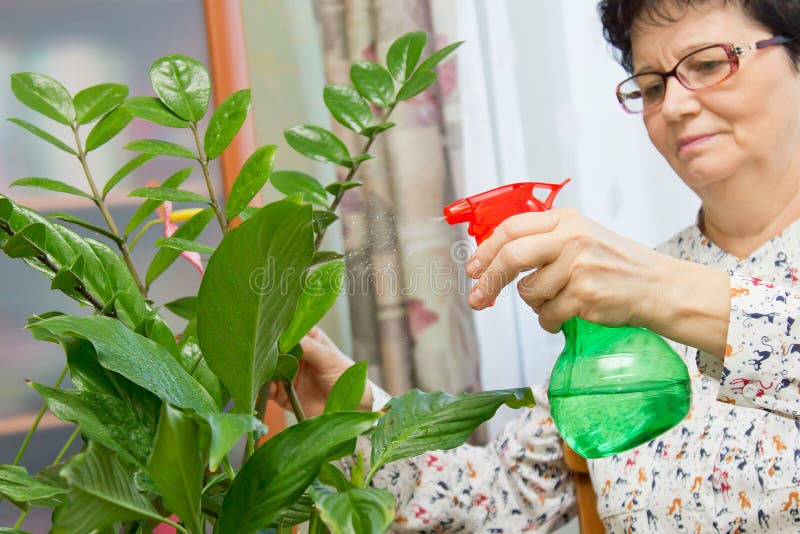HousePlantJoy is supported by our audience. When you purchase through one of our links, we may earn a small affiliate commission. As an Amazon Associate I earn from qualifying purchases. Your cost is not affected.
==================
Moving Plants Indoors for Winter
Wintertime is right around the corner, and while it screams happiness and holidays for some, it might not be the case for others. And by ‘others,’ I mean your plants as it means that the sun, heat, and humidity that they love so dearly leave for the holidays too! How should we deal with our plants during winter? Well, you are on the right place because we will be sharing with you the tips for you regarding moving plants indoors for winter. We’ll do our best to give simple but detailed tips regarding moving plants indoors for winter.
As winter approaches, many homeowners worry about how to keep their plants alive during the colder months. While some plants cannot survive in cold weather, there are many that can be successfully moved indoors. In this blog post, we discuss the best ways to move your plants indoors for winter. Also, we provide tips on how to care for them during this time. So don’t despair – your plants continue to thrive through winter with a little help from you!
Move Plants Indoors for Survival
The first thing you have to do is to move your outdoor plants indoors. Yes, you heard me right. You should take this necessary step unless you want to watch your plants wilt and freeze during this cold season. That’s what we’ll be talking about today. You will learn several helpful tips to move plants indoors for winter and the preparations you have to do before doing so. We’ll also give tips regarding the care you have to give to your beloved plants while they share a house with you during the season. Shall we proceed?
How to Prepare Your Plants for a Winter Move-In
I consider moving my plants indoors for the winter a necessary and somewhat manageable task. However, moving your plants indoors shouldn’t be done rashly and without preparation.
Prepare ahead when moving plants indoors for winter. In fact, consider these things before officially letting your plants in. It’s crucial that you take these steps to help make your plants at home and comfortable for the cold season to come.
Monitor The Temperature Levels at Night
Sometimes, it’s all about timing! Of course, you don’t want to move your plants indoors too early or too late as both mistakes can significantly affect the conditions of your dear plant children. Thus, as soon as you feel the heat slipping away, start monitoring the temperatures, preferably at night.
You have to watch out for the 45-degree (Fahrenheit) temperature. That level of cold is okay for most plants. However, be careful not to leave them outside before the cold reaches temperatures below 45 degrees Fahrenheit. If you fail to do so, you will immediately see effects on the leaves of your plants.
Inspect Your Plants for Pests
Indeed, you don’t want pests taking up space in your plants and your home. So, this is a crucial step for you and your plants as well. Before you move them indoors, check for pests all over the surface area of your plants, including even the back of the leaves, the stems, the pots, and the soil.
If you’re not sure what you’re looking for, we’ll give you a hint. Typically, your outdoor plants could have spider mites, scales, aphids, or ants leeching off of their nutrients. Keep a close eye on any of these pests because you don’t want to invite them for the holidays, too!
Give Your Plants a Chance to Acclimate
Remember to treat your plants as you would treat yourself before winter comes. Just like you, they need to prepare for the changes this season will bring, too. Your plants need to adjust for a bit before you’ll be able to move them safely indoors.
Acclimation means to adjust or when one gets accustomed to something. In this case, acclimation of plants needs to be done in order to reduce the possibility of them wilting and dying. Before bringing them indoors, place them in a spot where there’s not much light and sun for some weeks to help them get used to the lack of sunlight gradually.
If, at this point, you’re confused as to how long exactly you’re supposed to let your plants sit in a shaded spot, go back to the first tip under this section. Remember, it’s all about timing. Wink!
Trim Your Plants if Needed
Take this time to check how your plants are doing. Are they in need of a bit of a haircut? Then, go ahead and give them a little trim, as needed.
It’s great if you could remove any dead leaves so that they won’t fall out once they’re inside your house. Save yourself the trouble of tidying up dead leaves indoors by putting them away even before you take your plants inside.
Now, you’re ready to start breaking some sweat by finally moving your plants indoors in time for winter. If you have a sunroom made especially for this reason, then that’s fantastic! However, if that’s not something you readily have, you can always place them wherever you can.
How to Care for Plants Indoors After Moving Them Indoors for the Winter
The job doesn’t end in moving your plants indoors. You have to pamper them with some aftercare, too. Now, be reminded that caring for your plants indoors in the winter is not the same as you would in the summertime.
Read my tips carefully to avoid making the mistake of accidentally neglecting your plants’ needs.
Go Easy with Watering After moving plants indoors for winter
Indoor plants might need spritzing
During the winter, make sure you don’t overwater them. It would help to water them less now than you usually would. As long as the soil is not completely dried out, your plants will be okay.
This is because plants don’t grow at the same regular rate during the winter. During the cold season, most plants are in their dormant period, where they function less than usual to save their energy to survive the winter season. Thank this dormancy period, as it is why you have a perfectly living plant in the spring!
But in case you have to leave town for the winter holidays, you can bypass this tip. As much as we don’t want to overwater the plants, we also don’t want to dehydrate them.
Give Your Plants a Break from Fertilizers
The reason behind this is similar to why we don’t water our plants much in winter. Most plants rest during the winter months. Similar to a hibernating animal, your houseplants grow little, if at all, during the cooler months of the year. Then, in Spring, they revitalize and get ready to grow.
Therefore, your plants don’t need to be fertilized during the winter, so you can just wait for the spring season to do so. However, you can dilute your fertilizer in water in a 50:50 ratio before adding it to the pot under extreme circumstances.
Place Them in a Bright Area in the House
Your plants need sunlight, after all. The ideal place to put them during winter is by the windows or any spot where sunlight comes in.
If you’re placing them near the window, remember not to leave any opening where the breeze can enter to avoid freezing the leaves of your plants. At night, though, it’s better to put them away because the air near the windows can destroy your plants overnight.
LED grow lights will be your best friend for those of you who live in places where little to no sunlight can be seen. Place them over your plants to help them get nutrients and grow during these freezing times. Red and blue (or purple) lights are ideal for plants to encourage photosynthesis and growth.
Make Sure you Provide them with their Much-needed Humidity
Plants and people enjoy the humidifier in winter
Plants don’t need much water during the winter season, but they sure need some moisture and humidity. The dry air that winter brings can be extremely detrimental to the health of your plants. There are three things you can do to provide humidity for your plants during the winter.
First, use a humidifier at home. Aside from the positive effects, this thing can bring you, it can also be helpful for your plants. Humidifiers will provide some moisture in the air inside your home, which your plants will indeed thank you for.
If you don’t have a humidifier at home and can’t be bothered to get one, you can simply mist the leaves of your plants every day to avoid drying them out. All you need is a spray bottle and some water to do this trick.
Lastly, treat your plants to a good old humidity tray. Get a sturdy tray, and make sure it fits your pots because you will place the pots right on that tray. Throw in some pebbles on the tray, fill it with enough water to soak the pebbles to the top, and leave it there to evaporate and humidify your plants.
Avoid Repotting during the Winter Season unless it’s vital for your Plants’ Survival
As I’ve mentioned before, wintertime is crucial for your plants because it is their dormancy period. Their growth is slowed significantly, leaving them more sensitive than usual. Thus, avoid repotting your plants during the winter season when situations don’t call for it.
The reason is that repotting can be harsh for plants. It would be difficult for them to recover from the shock of being transferred to a different pot during their dormancy period. Unless your plant’s root system has wholly outgrown the pot or the soil is thoroughly deteriorated, you probably don’t need to repot the plant.
Clean their Leaves every Once in a While
Don’t let the leaves of your plants become dusty! Dust often creates a major affect on your plants, giving them plant diseases and impairing their ability to soak up what little sunlight they can get. Dust particles clog the plant, depriving it of the quality air it needs.
Consider that plants developed to be outdoors. Rain, breezes, even winds, help keep outdoor plants from accumulating dust and dirt. Since it doesn’t rain or have wind indoors, you need to provide that care.
Thus, make sure you inspect your plants every once and give them a little wipe when you see the dust on their surface.
Watch out for Pests during this time, too
Just because you’ve checked for pests before moving your plants indoors, it doesn’t mean these parasites can’t find their way in! Occasionally monitor your plants, soil, and pots for any insects or pests that make it harder for your plants to survive. Your plants will love you for it!
Ready to consider moving plants indoors for winter?
Again, as I said earlier, we find moving plants indoors for winter very easy to do. You just need to take note of a few important things. Doing your due diligence when you decide to move plants indoors for winter can save you a lot of trouble. Moving your plants indoors for winter might seem a bit tedious. However, consider the benefits in doing so. Aside from preserving your beautiful and hard-grown plants, you’d also be improving your patience, ability to discern, and gardening skills. And you develop a closer bond with your beloved plants.
If you want to learn more about how to properly take care of your plants during winter, and how to transfer them indoors, here is a video you should watch.
Read More:
Indoor plants still enjoy a window view















